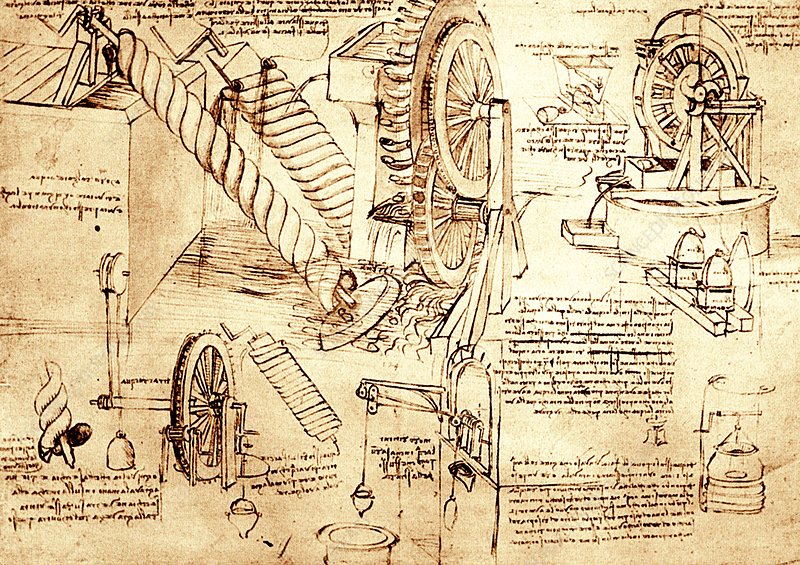Always asking questions. Constantly pushing boundaries. And never being satisfied with the status quo. These were the common attributes of Leonardo da Vinci, Michelangelo, Copernicus, Galilei, Shakespeare, Raphael or many other Renaissance people who initiated the “Re-Birth” of humanity. Take Leonardo da Vinci. He was the very ideal of the Renaissance man – a supremely gifted painter, scientist, inventor and polymath but more than that he was the north star of any person who calls themselves as an innovator. As an artist, he painted ‘The Last Supper’, ‘The Vitruvian Man’ and the ‘Mona Lisa’, arguably the world’s most famous painting. As an inventor, he designed workable precursors of a diving suit, a robot, and a tank – centuries before they became a reality. As a scientist, he designed the first self-propelled machine in history and described the processes governing friction.
The breadth of Leonardo’s innovation is intimidating, but his ways of thinking are still available to us all – even in our highly specialized world. That is what today’s corporations are looking for too. Since the role of the business is to create value- for customers, for employees, for shareholders and for society at large, executives need to lead the business in constantly creating new forms of value, even as older forms are being retired. This is the sustained systematic innovation within business- to be the constant, ongoing source of value creation for the business, riding the wave of creative destruction of older foundations of value so that the business can lead its markets in the delivery of new foundations of value.
While the Chief Innovation Officer (CInO) title has grown exponentially in the last 10 years, a standard definition of it has yet to emerge and varies from organization to organization. The term "Chief Innovation Officer" was first coined and described in the 1998 book Fourth Generation R&D by William L. Miller and Langdon Morris. Interest has grown in the past several years and the CInO title has grown exponentially in the last 10 years. There were ~430,000 people with the title on LinkedIn as of 2021. The new role was borne out of a need to develop distinctive enterprise-level capabilities which could help companies achieve more organic growth than their competitors. The role redefines what is possible for the company, removing top-level organizational barriers to innovation while enabling operational innovators to become successful. The position is all about creating a competitive edge by accelerating R&D, conceptualizing new products/services, and building an inclusive culture of innovation.
Responsibilities of a Chief Innovation Officers include developing, executing, and promoting an innovation strategy and roadmap aligned to business goals and growth priorities, creating an innovation pipeline with established clear processes, and cultivating a technological, physical, and psychological environment that supports rapid idea generation, experimentation, and decision making.
To break it down into discrete chunks then, the job of Chief Innovation Officer includes the following:
- Remain constantly attuned to the business’ external realities and ensure that everything it does in relation to innovation is done in harmony with those realities.
- Guide the creation of the business’ high level innovation strategy and do so in harmony with the governing corporate strategy
- Create the conditions inside the business that are conducive to innovation: the values, the philosophies, the beliefs and the culture
- Establish and drive the structures, processes, roles, relationships and operating model required to transform the organization into a productive and sustained engine of innovation
- Oversees the actions and efforts within the business that define its innovation content- choosing the top-down initiatives as well as the bottom-up participatory innovation initiatives.
- Oversee the actions and efforts within the business that define its innovation process- the whole innovation management effort for engaging the organization and for getting concepts out of innovation funnels and into the innovation pipeline
- Oversee the actions and efforts within the business that will ensure it successful at executing innovation
- Nurture and protect the homeless ideas that just may become the foundation of the future.
Let us stop asking what the future will bring, as if somebody else is going to make it or already made it. We make the future. We decide the future every day, by action and by inaction. This is the key question: “What do we want our future to be?”
This is the question that I ask myself every day: What kind of future do we envision for our businesses? What kind of future do I want my kids to have and my grandkids? What do we want? These are the only key questions. The crucial point about today is that we are at the fork in the road now. The next 10 years will bring more change than the previous 100 years. We can fix things; we can build back better, greener and all of that or we can fail, and it will get much worse. And this is up to us at this moment because there is new paradigms and new narratives emerging. It is a decade of dramatic change. We must think unusual. And this is how we are going to find the key to the future.
The role of the Chief Innovation Officer is too important to leave to chance.
https://www.linkedin.com/in/kadirsener/
